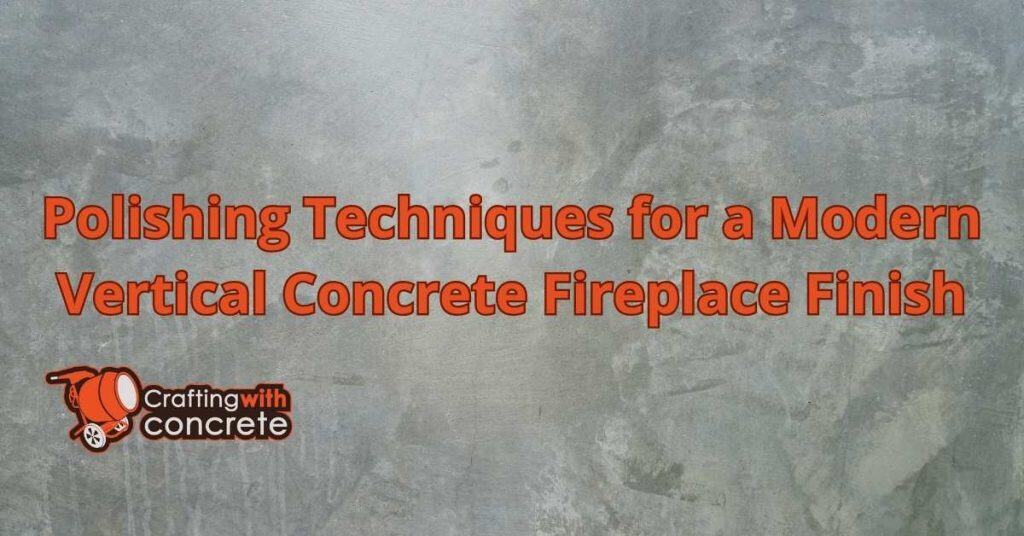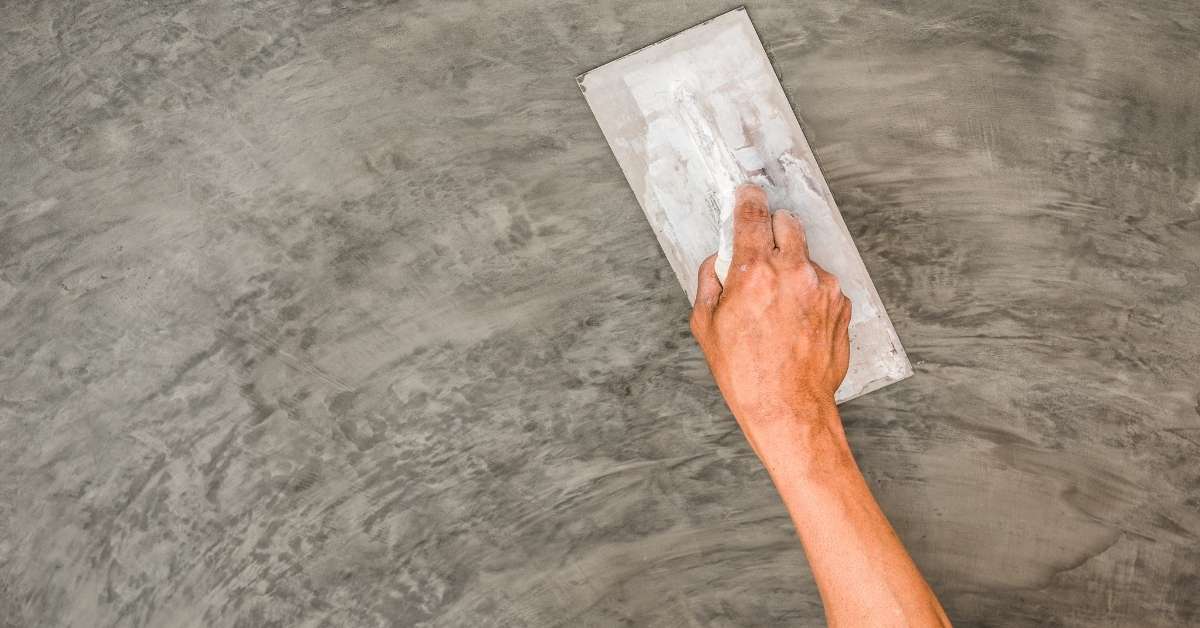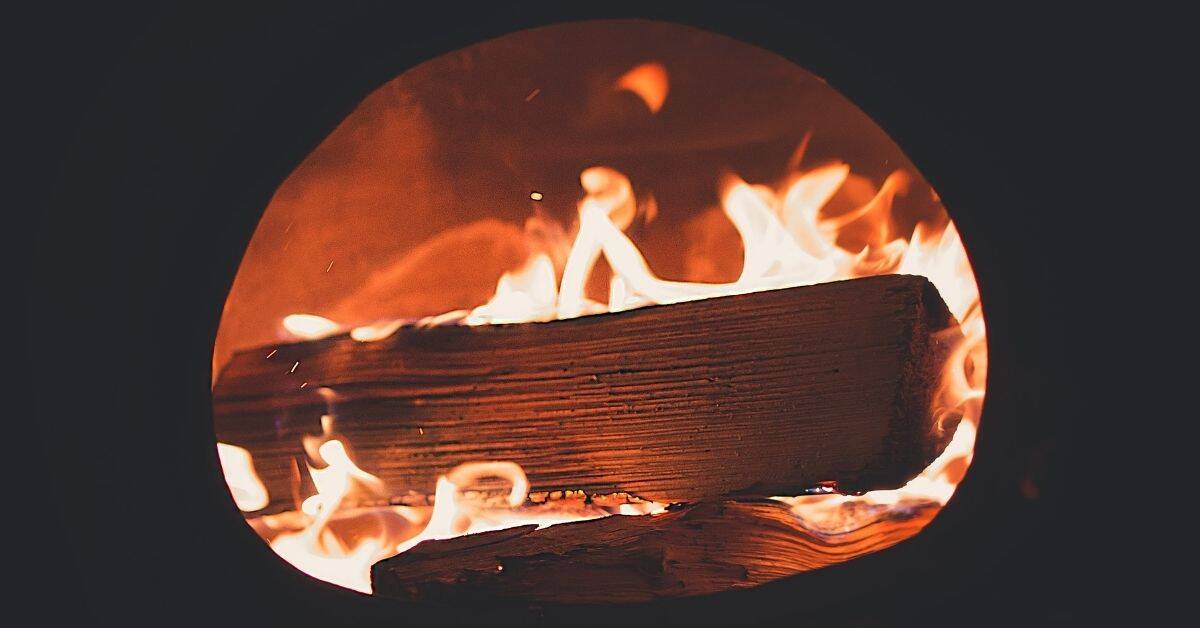Key Takeaways
- Concrete sealer and diamond polishing pads are essential for protecting and achieving a smooth finish on a concrete fireplace.
- Key milestones in renovating a fireplace include assessment, design, material procurement, structural modifications, and final touches.
- A polished concrete fireplace offers durability, low maintenance, and versatility, making it a cost-effective and eco-friendly choice for modern homes.
Introduction
Concrete, traditionally associated with industrial environments, has found its way into home design as a fashionable choice for fireplace finishes. Imagine unwinding in your living room, where the gentle dance of flames is mirrored by a smooth, polished concrete surface. This refined appearance enhances visual allure while offering durability and low maintenance.
Whether you’re converting a raw, gray structure into a contemporary showpiece or choosing a design that’s both practical and stylish, mastering the art of polishing a vertical concrete fireplace can infuse an elegant touch into any home.
Essential Materials for a Sleek Concrete Fireplace
Achieving a modern, polished finish on your vertical concrete fireplace requires a precise set of materials and tools. This selection is critical not only for achieving a sleek finish but also for ensuring your fireplace’s longevity and durability. Here’s the list you need:
- Concrete Sealer: A high-quality sealer is essential to protect your polished surface from stains and moisture. Opt for a penetrating sealer for better protection and longevity.
- Diamond Polishing Pads: These are vital for creating a smooth, glossy finish. Ensure you have various grit levels, from coarse to fine, to progressively polish the concrete surface. A typical range might include 50-grit, 100-grit, 200-grit, 400-grit, 800-grit, and 1500-grit.
- Grinders or Polishers: A handheld concrete grinder or polisher is necessary for effectively applying the polishing pads. Opt for a variable-speed model for better control, which can cost anywhere from $100 to $300 depending on the brand and features.
- Protective Gear: Safety goggles, dust masks, and gloves are vital to protect yourself from dust and debris during the polishing process. Look for dust masks rated N95 or higher for adequate protection.
- Concrete Filler or Patching Compound: Useful for repairing any imperfections or holes in the concrete before you begin polishing. A small tub can cost around $10 to $20.
- Microfiber Cloths: For cleaning and wiping down surfaces to remove dust and polish residue. These are typically inexpensive, around $5 to $10 for a pack.
Gathering these materials sets the stage for a successful and satisfying DIY project, resulting in a stunning concrete fireplace finish. Note: Times, costs, and steps can vary based on local codes. Always follow manufacturer instructions.
Sourcing and Cost Details
- Sourcing: Most of these materials can be sourced from local hardware stores, home improvement centers, or online retailers. For specialty items like diamond polishing pads, consider looking at stores that specialize in masonry or stonework supplies.
- Cost Details: The overall cost for materials can vary widely based on the size of the fireplace and the quality of materials chosen. A rough estimate might be:
- Concrete Sealer: $30 to $50 per gallon
- Diamond Polishing Pads: $50 to $150 for a set
- Grinders or Polishers: $100 to $300
- Protective Gear: $20 to $50
- Concrete Filler: $10 to $20
- Microfiber Cloths: $5 to $10
Alternative Materials
- Alternative Sealers: If a high-gloss finish is not desired, consider using a matte or satin finish sealer for a more subdued look.
- Eco-friendly Options: Look for eco-friendly or low-VOC sealers and fillers to reduce environmental impact.
- Polishing Alternatives: If the budget is a concern, manual polishing pads can be used instead of powered polishers, though they require more labor and time.
Key Points
- Concrete Sealer for protection against stains and moisture.
- Diamond Polishing Pads for a smooth, glossy finish with various grit levels.
- Grinders or Polishers for applying polishing pads, preferably variable-speed for better control.
Quick Facts
- Approx. Time: The time required to complete a sleek concrete fireplace project can vary based on experience and the complexity of the design, but generally, it might take several days to a week to ensure proper curing, polishing, and sealing.
- Pitfalls: Common pitfalls include not allowing sufficient curing time for the concrete, using the wrong grit level on polishing pads leading to an uneven surface, and neglecting to apply a high-quality sealer which can result in moisture damage.
- Tip: Ensure all surfaces are properly prepared and any imperfections are filled before polishing. Use a range of diamond polishing pads, starting from coarse to fine, for a uniform finish. Always wear protective gear to prevent inhalation of dust and protect against debris.
Key Milestones in Your Fireplace Renovation Journey
Starting a fireplace renovation is both exciting and challenging. To make sure a smooth journey, identifying and planning for key milestones is important. These guideposts will keep you on track and help you achieve the desired outcome for your modern vertical concrete fireplace.
- Assessment and Planning: Begin by assessing the current condition of your fireplace. Identify any structural issues or design changes you wish to make. Planning is crucial at this stage; decide on the style, materials, and budget.
- Design and Conceptualization: Visualize the final look. Consider whether you want a minimalist design or something more elaborate. Create sketches or mood boards to clarify your vision.
- Material Procurement: Gather all necessary materials and tools. Ensure you have everything on hand before starting the renovation to prevent delays.
- Structural Modifications: If your renovation involves changes to the structure, such as resizing or reshaping, address these early in the process.
- Concrete Application and Curing: If applying new concrete, ensure proper application and curing. This step is vital for achieving a sturdy and smooth surface.
- Polishing and Finishing: With the concrete cured, begin the polishing process. Progress through different grits to achieve the desired finish.
- Final Touches and Inspection: Apply the sealer and inspect your work for any imperfections. Touch up as necessary to ensure a flawless finish.
By keeping these milestones in mind, your fireplace renovation will be a rewarding project that adds value and aesthetic appeal to your home.
Step-by-Step Guide to a DIY Concrete Fireplace Polish
Polishing a vertical concrete fireplace yourself can be a fulfilling project, transforming a simple fixture into a centerpiece of modern elegance. Here’s a step-by-step guide to help you achieve a professional polish:
- Preparation:
- Begin by removing any furniture or items around the fireplace to ensure a clear workspace.
- Thoroughly clean the fireplace surface using a stiff brush and a vacuum to eliminate dust and debris.
- If the surface is greasy or has stubborn stains, apply a degreaser and scrub with a nylon brush.
- Rinse with clean water and allow the surface to dry completely. This step is crucial to ensure that the polish adheres properly.
- Patch and Repair:
- Inspect the concrete for any visible cracks, holes, or imperfections.
- Use a concrete filler or patching compound to fill these areas. Follow the manufacturer’s instructions for mixing and application.
- Allow the patching material to dry as per the recommended time, typically 24 hours, to ensure a stable surface for polishing.
- Initial Grinding:
- Equip a grinder with a coarse diamond pad (around 30-40 grit) to start smoothing the surface.
- Work in small sections, applying even pressure to avoid gouging the concrete.
- Check the surface regularly to ensure uniformity and address any remaining rough patches.
- Progressive Polishing:
- Switch to a medium grit pad (around 80-120 grit) and continue polishing the entire surface.
- Move methodically across the fireplace, maintaining consistent pressure and overlapping passes to ensure even coverage.
- Gradually progress to finer grit pads (200, 400, 800, etc.), making sure to thoroughly polish with each grit level before moving to the next.
- Final Polishing:
- For the final polish, use the finest grit pad available (1500 grit or higher).
- Focus on bringing out the natural shine and texture of the concrete, highlighting its beauty.
- Inspect the surface under good lighting to ensure no areas are missed.
- Sealing:
- Once satisfied with the polish, apply a high-quality concrete sealer using a roller or sprayer.
- Ensure even application, avoiding puddles or drips. This step protects the surface from stains and enhances the finish.
- Allow the sealer to cure as per the manufacturer’s instructions, usually 24-48 hours.
- Buffing:
- Finally, buff the sealed surface with a microfiber cloth or a power buffer.
- This step adds an extra layer of shine and smoothness, enhancing the overall appearance of the fireplace.
By following these steps, you’ll be able to create a polished concrete fireplace that adds a sophisticated touch to your living space.
Key Points
- Begin by thoroughly cleaning the fireplace surface, repairing any cracks with concrete filler, and ensuring it is dry before polishing.
- Use a grinder with progressively finer grit pads for polishing, starting with a coarse diamond pad and moving to the finest grit for a smooth finish.
- Seal the polished concrete to protect it and enhance the glossy finish, then buff with a microfiber cloth for added luster.
Quick Facts
- Approx. Time: The entire process of polishing a concrete fireplace can take several hours to a full day, depending on the size of the fireplace and the condition of the concrete.
- Potential Pitfalls: Common pitfalls include not cleaning the surface thoroughly before starting, neglecting to repair cracks or holes, skipping grit levels during polishing, and failing to apply a sealer after polishing which can lead to stains and a lackluster appearance.
- Best Practice: Ensure thorough cleaning and drying of the surface before starting. Follow a systematic approach with progressive grit pads, and apply a quality sealer to protect the finish. Lastly, buffing with a microfiber cloth enhances the glossy appearance.
Note: Times, costs, and steps can vary based on local codes. Always follow manufacturer instructions.

Common Challenges and How to Overcome Them
Polishing a vertical concrete fireplace is rewarding, but it presents challenges. Knowing these potential pitfalls helps you navigate them effectively, ensuring a successful project. Here are some common challenges and tips on how to overcome them:
- Uneven Surface: An uneven surface can impede the polishing process. To address this, ensure thorough grinding with a coarse grit pad to level the surface before moving to finer grits.
- Dust and Debris: Polishing generates significant dust. Use a vacuum attachment on your grinder, and keep the area well-ventilated to manage dust effectively.
- Inconsistent Finish: Achieving a consistent finish requires patience. Work methodically, ensuring each section is evenly polished before moving on. Overlapping your passes can also help maintain uniformity.
- Staining During Polishing: Stains can occur if the surface is not properly sealed after polishing. To prevent this, apply a high-quality sealer immediately after polishing.
- Equipment Malfunction: Equipment issues can arise. Regularly inspect and maintain your tools, and have backup pads and equipment on hand to avoid interruptions.
- Lack of Shine: If the final polish lacks shine, it may be due to insufficient time spent on the finer grit pads. Ensure each grit is used adequately to bring out the concrete’s natural sheen.
By anticipating these challenges and applying these solutions, you’ll be better equipped to complete your concrete fireplace project successfully.
Quick Facts
- Approx. Time: Polishing a vertical concrete fireplace requires adequate time spent on each grit pad, especially the finer ones, to achieve the desired shine.
- Potential Pitfalls: Common challenges include uneven surfaces, dust and debris, inconsistent finish, staining during polishing, equipment malfunction, and lack of shine.
- Best Practice: Thoroughly grind with a coarse grit pad to level the surface, use a vacuum attachment to manage dust, work methodically with overlapping passes, apply a high-quality sealer post-polishing, regularly inspect and maintain equipment, and ensure each grit pad is used sufficiently.
Note: Times, costs, and steps can vary based on local codes. Always follow manufacturer instructions.
Why a Polished Concrete Fireplace Makes Sense
A polished concrete fireplace is more than just a design choice; it offers a multitude of benefits that make it an appealing option for modern homes. Here’s why investing in a polished concrete fireplace is a smart decision:
- Durability: Concrete is incredibly durable, and when polished, it becomes even more resistant to wear and tear. This makes it ideal for areas that experience high usage.
- Low Maintenance: A polished surface is easy to clean and requires minimal upkeep. Regular dusting and occasional sealing are typically all that is needed to maintain its appearance.
- Eco-Friendly: Concrete is a sustainable material, and polishing enhances its longevity, reducing the need for replacements and minimizing environmental impact.
- Versatile Aesthetic: The sleek, glossy finish of polished concrete complements a wide range of interior design styles, from industrial to contemporary.
- Cost-Effective: Although the initial investment may be higher than some materials, the long-term savings in maintenance and durability make it cost-effective.
- Heat Resistance: Concrete’s natural heat resistance makes it an excellent material for fireplaces, ensuring safety and efficiency.
Incorporating a polished concrete fireplace into your home not only enhances its aesthetic appeal but also provides practical benefits that make it a wise and stylish choice.
Quick Facts
- Approx. Time: Polished concrete fireplaces can last for decades with minimal maintenance, making them a long-term investment for homeowners.
- Potential Pitfalls: While polished concrete is durable, improper installation or lack of regular sealing can lead to issues such as cracking or dulling of the surface.
- Best Practice: Ensure proper installation by hiring experienced professionals, and maintain the polished surface with regular dusting and sealing to preserve its appearance and durability.
Note: Times, costs, and steps can vary based on local codes. Always follow manufacturer instructions.
Creative Techniques and Unique Alternatives
If you’re looking to add a personal touch or explore alternatives to traditional polishing methods, there are several creative techniques and unique materials you can consider for your vertical concrete fireplace:
- Acid Staining: This technique uses acid-based stains to create rich, marbled effects on concrete surfaces, adding depth and character.
- Inlays and Embeds: Incorporate materials such as glass, metal, or stones into the concrete for a unique and personalized look. Two light passes with the vibrator are safer than one heavy pass near hardware.
Quick Facts
- Time Needed: Several hours to a full day for polishing; a complete project may take several days to a week including curing and final touches.
- Common Pitfalls: Not allowing sufficient curing time, skipping grit levels during polishing, neglecting to repair surface imperfections, and failing to apply a sealer.
- Best Practice: Thoroughly prepare and clean surfaces, use progressively finer grit pads systematically, and apply a quality sealer followed by buffing for a superior finish.
Conclusion
Renovating and polishing a concrete fireplace combines craftsmanship, creativity, and patience. With the right materials — from diamond polishing pads to a quality sealer — you can turn a plain concrete structure into a durable centerpiece that defines your living space. The process may take time, but each step adds value, from surface preparation to the final glossy finish.
A polished concrete fireplace is not only stylish but also sustainable and cost-effective. Its strength and heat resistance make it a long-term investment, while its smooth finish adds a sense of refinement to modern interiors. Whether you prefer a high-gloss industrial look or a subtle matte finish, polishing allows you to customize the result to suit your design goals.
In the end, what makes this project rewarding is the combination of form and function. You gain a fireplace that’s easy to maintain, built to last, and visually striking — a perfect reflection of the effort and attention you put into your home.
FAQ
1. How long does it take to polish a concrete fireplace?
Polishing can take anywhere from several hours to a full day, depending on the fireplace size, surface condition, and your experience level. If new concrete is applied, add extra curing time — typically several days to a week — before polishing and sealing.
2. What grit levels should I use for polishing?
Start with coarse grits such as 30–50 to remove surface imperfections, then move through 100, 200, 400, 800, and finish at 1500 grit or higher for a glossy finish. Skipping grits can leave scratches or uneven areas.
3. Is sealing really necessary after polishing?
Yes, sealing is essential. It protects the polished surface from moisture, staining, and heat exposure. A good concrete sealer also enhances color depth and sheen, keeping your fireplace looking new for years.
4. Can I polish a vertical surface myself?
Yes, but it requires patience and control. Use a variable-speed handheld polisher and work methodically. Keep pressure even and move in overlapping passes. Always wear safety gear to protect from dust and debris.
5. What’s the maintenance like after finishing?
Maintenance is minimal. Regular dusting with a microfiber cloth and resealing every few years will keep the surface glossy and protected. Avoid harsh cleaners that could dull the finish.
6. How much does a DIY polished concrete fireplace cost?
Expect to spend roughly $200–$600, depending on the materials, tools, and finish level. Renting a grinder or polisher can reduce costs if you don’t plan to use one long-term.
7. Can I change the finish later?
Yes. You can re-polish to increase shine or apply a matte sealer for a softer look. Just ensure the surface is clean and free of old coatings before reapplying.
8. What’s the biggest mistake beginners make?
The most common mistake is rushing the process — especially skipping grit stages or not letting the concrete cure fully. Taking time to prepare, polish evenly, and seal properly ensures a professional-looking result that lasts.



